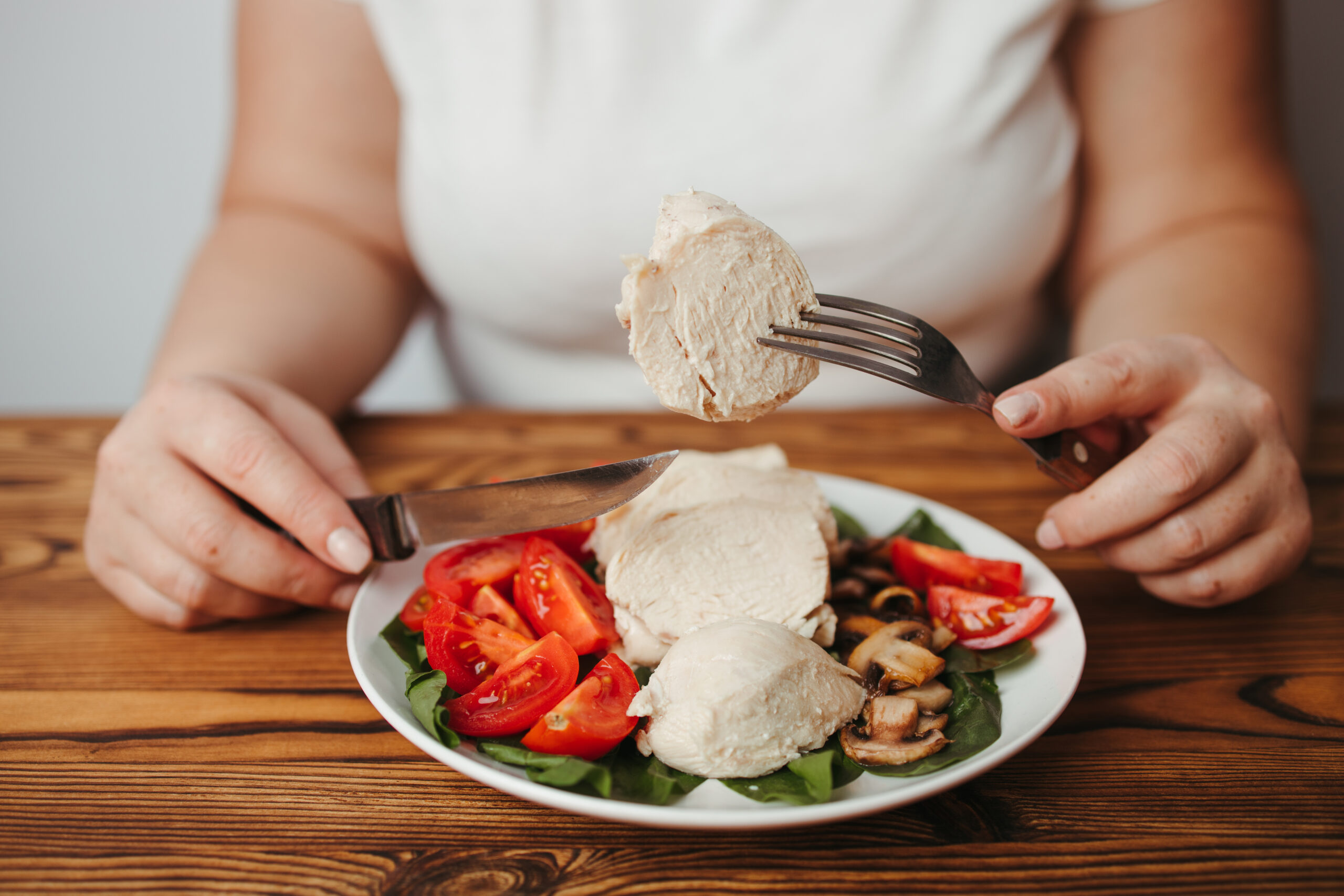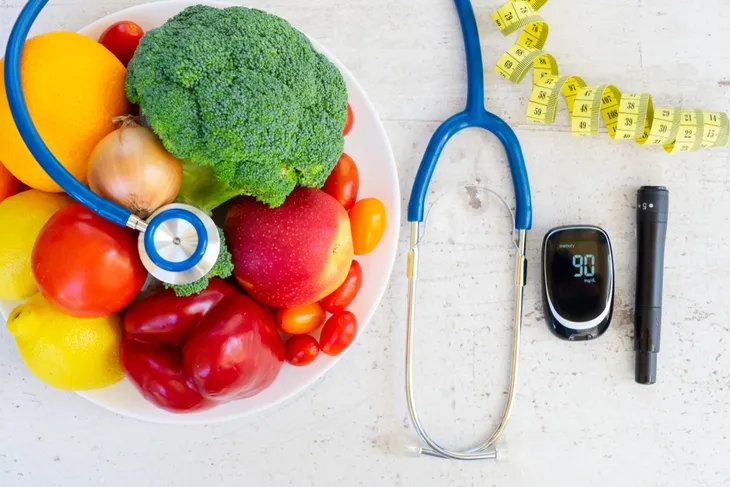- Diabetics should talk to their healthcare provider or a registered dietitian about their individual nutritional needs.
- Fish, shellfish, lean cuts of pork, poultry, and beef are generally among the best meats for diabetics.
- Highly processed, fried and fatty meats are among the worst meats for diabetics.
- Other sources of protein for diabetics include eggs, low-fat dairy products, nuts, seeds, and tofu.
For the 37.3 million people living with diabetes, diet plays an important role in regulating blood sugar levels and lowering the risk of health complications. Making the right choices meal after meal can simplify adopting a healthy diabetic diet.
Meats serve as a main source of protein for many people with diabetes. Knowing which ones are most likely to fit a diabetic diet is a key part of smart eating for those with the disease.
What Is a Diabetic Diet?
A diabetic diet is an eating plan that’s optimized for a person with diabetes and supplies essential nutrients, vitamins, and minerals. There’s no single diet that’s ideal for all diabetics. However, many diabetics benefit from counting carbohydrates, as sugars and starches can raise blood sugar levels.
People with diabetes are also twice as likely to develop heart disease. As a result, diabetic diets tend to focus on limiting sodium and trans and saturated fats. The American Diabetes Association (ADA) recommends that, at each meal, diabetics fill:
- Half the plate with non-starchy vegetables
- One-quarter of the plate with carbohydrate foods
- One-quarter of the plate with meats and other protein foods
Discuss your diet with your healthcare provider for personalized advice.
Should Eat: Lean Poultry
Poultry, such as chicken, turkey and Cornish hen, is a good source of protein. Generally, white meat from the breast and wings contains less fat than dark meat from the legs. For example, a 3-ounce boneless skinless chicken breast contains 140 calories and 3-grams of fat with just 1-gram of saturated fat versus 170 calories, 9-grams of fat with 3-grams of saturated fat for an identically sized serving size of dark meat.
If you’re eating pieces from a whole bird, remove the fatty skin before eating. Wild game birds, such as goose, duck, and pheasant, are also typically nutritious options, provided you don’t eat the skin.
Shouldn’t Eat: Processed Deli Meats
Deli meats can be an easy go-to for a brown-bagged lunch, but some may not be the best options for a diabetic diet. Options such as salami, pimento loaf, and bologna are heavily processed and typically have a large amount of fat per ounce. They’re also often laden with sodium, which can increase blood pressure levels.
This doesn’t mean you have to say goodbye to sandwiches for good. Chipped beef, turkey and ham, and thinly sliced deli meats are often good alternatives. Some grocery stores list the nutritional facts for deli meats on signage in the store. If yours doesn’t, ask for the information, or focus on prepackaged products that have the info preprinted.
Should Eat: Lean Beef Cuts
Typically, beef has more fat and calories per serving than chicken or turkey, but some cuts still fit the criteria of lean meat options that may fit a diabetic diet. Some options to look for include:
- Chuck roast
- Cubed steak
- Flank steak
- Ground round
- Porterhouse steak
- Rib roast
- Rump roast
- Sirloin
- Tenderloin
- T-bone steak
When comparing meats at the grocery store, look for ones that bear the USDA Select label. To bear this mark, beef must meet certain standards set by the U.S. Department of Agriculture (USDA). Generally, these meats have less fatty marbling. In addition, processors have trimmed them to remove excess fat.
 Shutterstock/stockcreations
Shutterstock/stockcreationsShouldn’t Eat: Sausages and Hot Dogs
As with deli meats, sausages tend to be highly processed, and they’re high in sodium and typically high in fat. This means you should limit your intake of hot dogs, breakfast sausage, bratwurst, Italian sausage, Polish sausage, smoked sausage, kielbasa, and similar foods.
Fortunately, many manufacturers offer healthier alternatives to these foods. For example, you can finish off your breakfast with a turkey sausage link. Some brands also offer low-fat and low-sodium pork and beef hot dogs.
Should Eat: Fish
Fish is generally a very lean or lean meat choice that fits well into a diabetic diet. It’s also a good source of omega-3 fatty acids, essential nutrients for the eyes, blood vessels, and endocrine and immune systems. Some fish that you can add to your menu include:
- Cod
- Flounder
- Haddock
- Herring
- Salmon
- Sardines
- Trout
- Tuna
If you’re opting for canned fish, check the amount of sodium on the package. Choose products packaged in water if possible. When oil-packed is the only alternative, rinse the canned fish thoroughly before eating.
 Shutterstock/Maria_Usp
Shutterstock/Maria_UspShouldn’t Eat: Pork Bacon
Pork bacon is a breakfast staple, burger topper, and casserole ingredient for many people. Unfortunately, it’s usually not the best option for a diabetic diet.
One slice of baked bacon contains 1.5-grams of saturated fat. Frying bacon the way many people do will usually increase the fat content significantly, and few people stop at just one strip. Because they usually contain less saturated fat, turkey bacon and Canadian bacon may be better choices when you’re craving something crispy.
Should Eat: Lean Pork Cuts
Bacon may be a “shouldn’t” for a diabetic diet, but not all pork needs to be eliminated from a diabetic diet. Some types qualify as lean cuts, such as:
- Boiled ham
- Center loin chops
- Cured ham
- Fresh ham
- Thinly sliced deli ham
- Tenderloin
Canned ham is also typically low in fat per ounce. However, some products may contain large amounts of sodium, so read labels carefully when selecting one. Some of the fattier cuts of pork that you may wish to avoid include ground pork and spareribs.
Should Eat: Shellfish
Like fish, many varieties of shellfish contain omega-3 fatty acids and are a good source of very lean protein. Examples include clams, crab, lobster, scallops, shrimp, and oysters.
If you’re purchasing canned shellfish, following the same guidelines for canned fish is wise. Varieties packed in water are the best options. Be sure to rinse oil-packed shellfish prior to eating. You should exercise caution with imitation crab meat and lobster. These products are often heavily processed and may contain added sugars and sodium to improve flavor.
Meatless Alternatives
Meats aren’t the only way for diabetics to get protein. Egg white and egg substitutes are very lean protein options, as are low-fat and fat-free cheeses and dairy products. Vegans can get protein from soy products, such as tofu, soy milk, tempeh, and edamame. Seitan derived from gluten is another popular meatless alternative.
Diabetics can also add lentils, whole grains, beans, nuts, and seeds to their diets to increase their protein intake. These foods are nutrient-dense, making them an excellent source of vitamins and minerals.
Be Careful About Portion Size
Weight management is an important part of diabetes control. The U.S. Centers for Disease Control and Prevention reports that losing just 5- to 10-percent of total body fat could lead to health benefits for people who are overweight or obese. Although there are many factors involved, the chief engine of weight loss is calories. When you consume fewer calories than you burn, your body burns stored fat for fuel.
Paying attention to portion size is important when choosing meats for a diabetic diet. Often, the portion size is smaller than you might think. For example, a 3-ounce serving of chicken is about the size of a deck of cards. Investing in a food scale may help simplify portion sizing to aid in weight management.
How You Cook and Serve Counts Too
Even foods that appear as “shoulds” on this list may not be the best options for a diabetic diet if prepared the wrong way. Generally, deep-fried foods contain more fat and calories than those prepared using other cooking methods, such as steaming, baking, grilling, braising, boiling, or microwaving.
When you need to add fat for cooking purposes, choose a monounsaturated or polyunsaturated option, such as olive or canola oil instead of butter or lard. Be careful about any sauces, dressings and condiments you add. Ones that you buy prepared in a bottle may not be suitable for a diabetic diet because they could contain large amounts of sodium and added sugar.













